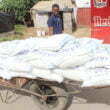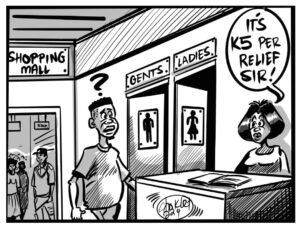Mealie meal prices are likely to remain high this year until the main maize harvest period in May, says the Indaba Agricultural Policy Research Institute (IAPRI).
And IAPRI says the food security situation for some households in Gwembe and Shang’ombo districts remains dire due to limited availability of food as a result of crop failure in the previous season and resultant high food prices.
Despite government’s intervention of subsidizing millers’ production through the offloading of cheaper maize to selected millers via the Food Reserve Agency (FRA), mealie meal prices had not stabilized for the entire year in the last 12 months.
The national average price of a 25Kg breakfast bag sky-rocketed to an unprecedented all-time high of K163.30 in December, 2019, compared to just K88.69 in the same month in 2018, according to Zambia Statistics Agency (ZSA) data, formerly the Central Statistical Office (CSO).
While contracts between the FRA and some selected millers had been signed to ensure price stability of the staple commodity, the national average price over the period under review represents an 84.12 per cent increase.
In a Food Security Status Report for the fourth quarter of last year, released this month, IAPRI cautioned that high mealie meal prices were likely to persist this year until the main maize harvest period in May.
“The supply of the main staple crop, maize, in most parts of Zambia has generally remained tighter than usual, pushing prices steeply upwards. Consequently, the price of mealie meal has risen above average. This upward trend in the price of maize grain and mealie meal is likely to continue until the main maize harvest period of April/May 2020,” IAPRI stated.
It explained that erratic supply of maize, triggered by drought conditions experienced in the southern half of the country, had been the major factor in maintaining higher mealie meal prices.
“Given the tight maize supply in the 2019/2020 consumption season following the 2018/2019 crop failure in parts of the southern half, maize prices have been exceptionally high during the course of the 2019/2020 marketing season. Record high maize prices have continued being recorded in all parts of the country with notably steep increases in the August to October months,” it narrated.
“In Gwembe, maize grain prices rose by 41 per cent, from ZMW175 per 50Kg bag in the third quarter to ZMW248 at the end of November, while prices in Shang’ombo rose by 33 per cent. As at the end of November, breakfast and roller meal prices were at ZMW145 and 130 per 25Kg bag, respectively, marking a 16 and 9 per cent increase between September and November period. The tight supply of maize grain has contributed to the increased maize grain prices.”
And IAPRI, the agro-focused think-tank and agricultural policy research and outreach institute, disclosed that the food security situation for some households in Gwembe and Shang’ombo districts remained dire due to limited availability of food as a result of crop failure in the previous season.
“The food security situation for some households in Gwembe and Shang’ombo districts remains of great concern due to limited availability of food as a result of crop failure in the previous season and resultant high food prices. In Shang’ombo, food accessibility is a challenge for those in more remote areas compared to those closer to the central business area,” IAPRI stated.
“The poor road conditions leading to Shang’ombo remains one of the major contributors to poor food accessibility as suppliers shun away from reaching Shang’ombo preferring to deliver products only up to Sioma District, from where four-wheel vehicles have to be sourced to ferry the supplies into Shang’ombo district. This has been affecting the timely distribution of relief food as well as agricultural inputs.”
Meanwhile, IAPRI appealed to government for Zambia to have an open-border policy to ensure the country was more food secure.
Early last year, government finally allowed formal maize and mealie meal exports, but quickly rescinded the policy less than two months later on fears of food insecurity given the higher commodity prices obtaining in regional markets.
“For Zambia to sustainably remain food secure, open maize border policy should be regarded as part of the solution because in times of shortfall, guarantees that borders will remain open triggers supply response among farmers who wish to produce and earn higher prices or traders who may want to fill the gap through well-timed imports. A stop and go maize production and marketing approach will continue to hamper Zambia’s ability to be the region’s maize grain supplier,” stated IAPRI.











